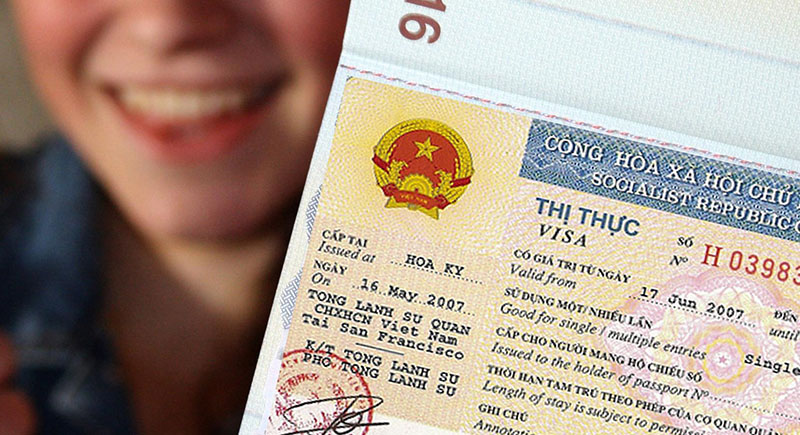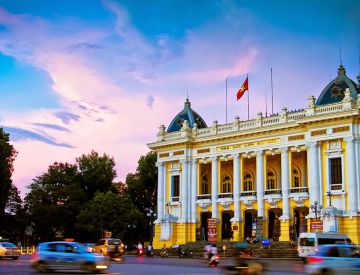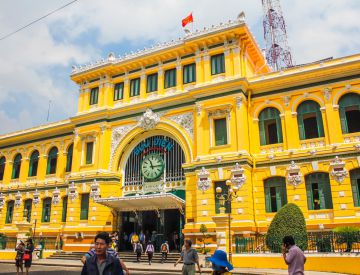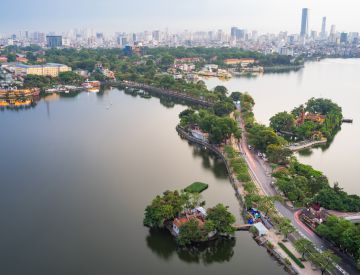Vietnamese visa is a type of travel document granted by competent Vietnamese authorities, providing permission to travel to and enter Viet Nam.
Viet Nam e-Visa is valid for a maximum of 90 days, for single or multiple entries.
The e-visa application fee is paid through the e-visa portal's e-payment gateway and is non-refundable in case the visa is not granted.
E-visa fee: 25 USD for a single-entry visa / 50 USD for a multiple-entry visa.
Outside Vietnam foreigners who want to enter Vietnam can personally apply for E-visa or through the requesting agencies and organizations.
From 08:00 on 11/11/2024 (GMT+7), the Vietnam Electronic Visa Portal will operate on two new domains: https://thithucdientu.gov.vn and https://evisa.gov.vn. Please visit these new addresses to submit your application and check the results.
Foreigners using e-visas must enter and exit Viet Nam through international border gates designated by the Government (list of border gates).
Conditions for being granted e-visa:
- Outside Vietnam foreigners;
- Holding valid passport;
- Not falling into the cases of suspension from entry prescribed in Article 21 of Law on foreigners' entry into, exit from, transit through, residence in Vietnam.
Foreigners with e-visas are allowed to enter Vietnam via the following international border gates:
13 international airports: Noi Bai (Ha Noi), Tan Son Nhat (Ho Chi Minh City), Cam Ranh (Khanh Hoa), Da Nang, Cat Bi (Hai Phong), Can Tho, Phu Quoc (Kien Giang), Phu Bai (Thua Thien Hue), Van Don (Quang Ninh), Tho Xuan (Thanh Hoa), Dong Hoi (Quang Binh), Phu Cat (Binh Dinh), Lien Khuong (Lam Dong).
16 land border gates: Tay Trang (Dien Bien), Mong Cai (Quang Ninh), Huu Nghi (Lang Son), Lao Cai, Na Meo (Thanh Hoa), Nam Can (Nghe An), Cau Treo (Ha Tinh), Cha Lo (Quang Binh), La Lay and Lao Bao (Quang Tri), Bo Y (Kon Tum), Moc Bai and Xa Mat (Tay Ninh), Tinh Bien and Vinh Xuong (An Giang), Ha Tien (Kien Giang).
13 sea border gates: Hon Gai and Cam Pha (Quang Ninh), Hai Phong, Nghi Son (Thanh Hoa), Vung Ang (Ha Tinh), Chan May (Thua Thien Hue), Da Nang, Nha Trang (Khanh Hoa), Quy Nhon (Binh Dinh), Dung Quat (Quang Ngai), Vung Tau (Ba Ria - Vung Tau), Ho Chi Minh City, Duong Dong (Kien Giang).
How to Apply for Vietnam's e-Visa:
Step 1: Prepare the required materials:
- One 4x6 passport photo in .jpg format with a white background, without glasses.
- One photo in .jpg format of your passport data page.
- Passport valid for at least six months with at least 2 blank pages
- Your temporary address in Vietnam and points of entry and exit.
- Debit or credit card for payment.
Step 2: Click on this site: the official site of the Vietnam Immigration Department
https://evisa.xuatnhapcanh.gov.vn/en_US/web/guest/khai-thi-thuc-dien-tu/cap-thi-thuc-dien-tu
From 08:00 on 11/11/2024 (GMT+7), the Vietnam Electronic Visa Portal will operate on two new domains: https://thithucdientu.gov.vn and https://evisa.gov.vn. Please visit these new addresses to submit your application and check the results.
Step 3: Upload your .jpg images (passport data page and passport photo) and fill out the required fields on the form completely. Submit your form.
Step 4: Pay the E-visa fee of 25 USD for a single-entry E-visa and 50 USD for a multiple-entry E-visa. Copy down the document code provided.
Step 5: Normally, within three working days you should receive news of your e-Visa application via email. But for the busy time periods, the processing time can be longer than 3 days, we highly recommend you apply 30 - 60 days before your travel date. You can also run a search for your e-Visa at
https://evisa.xuatnhapcanh.gov.vn/en_US/web/guest/tra-cuu-ho-so
Step 6: Use your document code to locate your e-Visa online. Download and print the e-Visa in two copies for extra safety.
Vietnam Visa Exemptions
Visitors from the following countries may enter visa-free and stay for the indicated number of days. The full list of countries with visa exemptions is as on this link.
To stay beyond this number of days, you should apply e-visa in advance.
Note:
- If there is any missing or incorrect/unidentified information, your application will not be accepted.
- Vietnam Immigration keeps the right to give your E-visa application approval or not - based on your information of application and Vietnam Laws.
Disclaimer: Whilst every effort is made to ensure the information is correct and up to date, there may be changes that we are not aware of.

.png)





.png)








